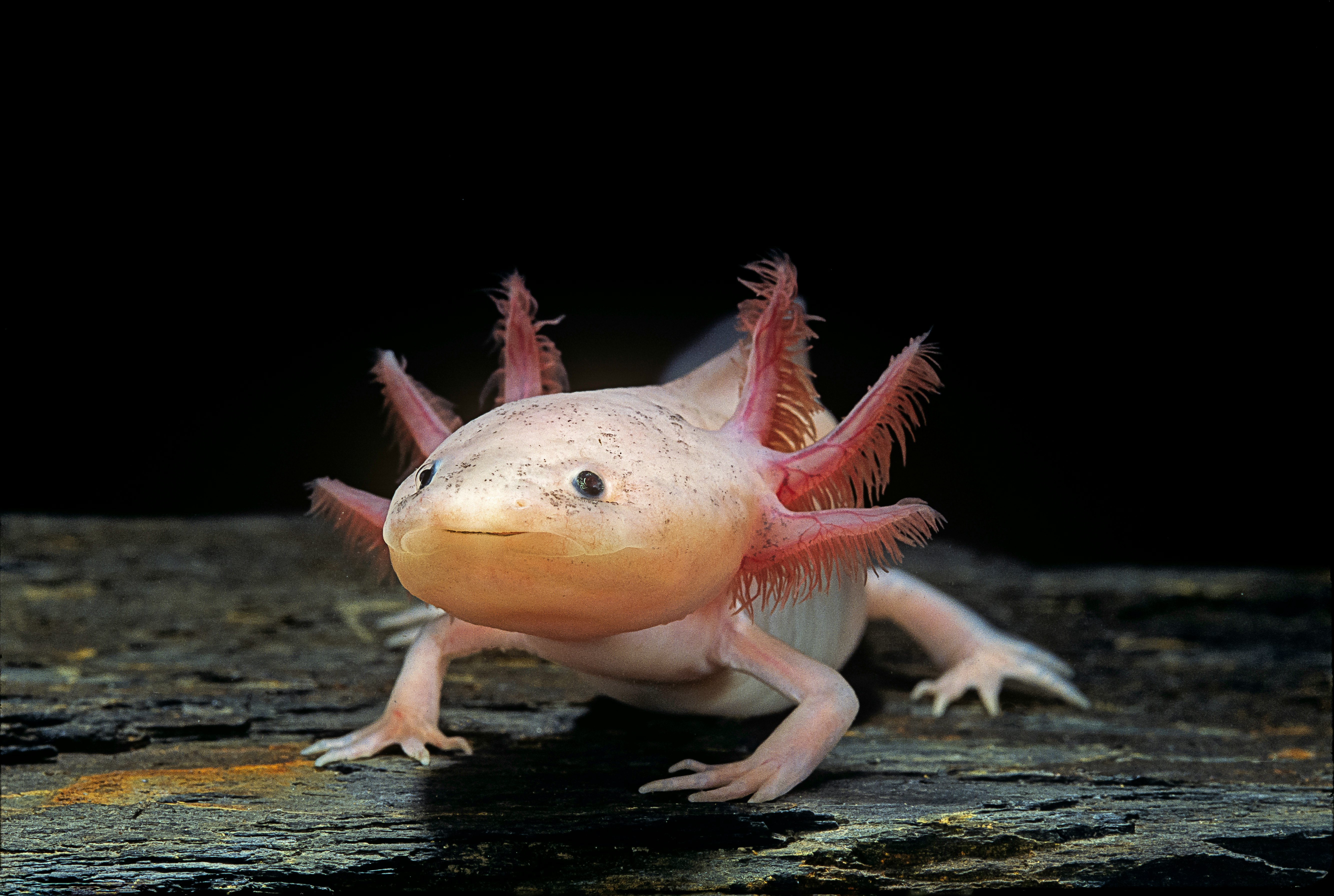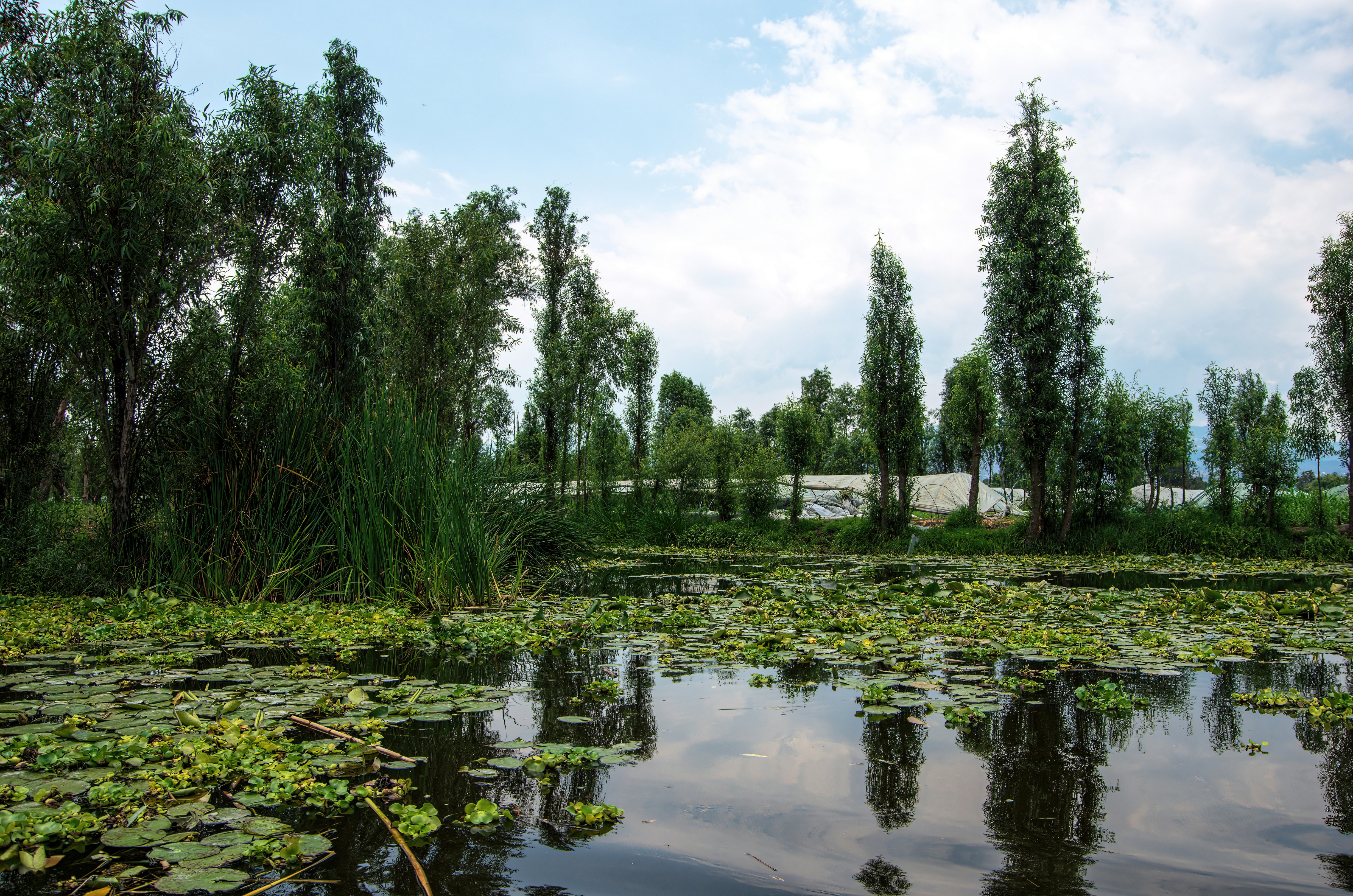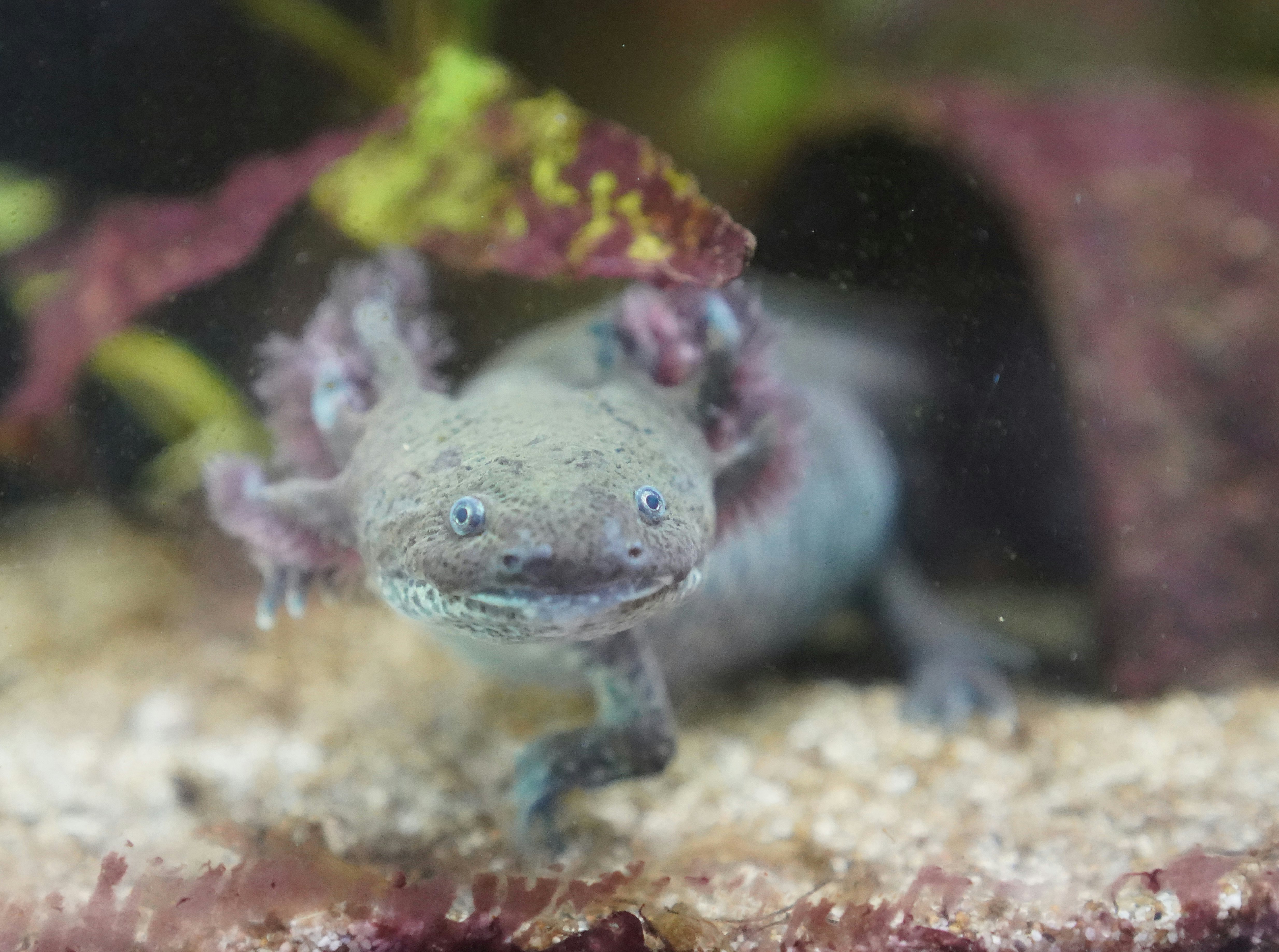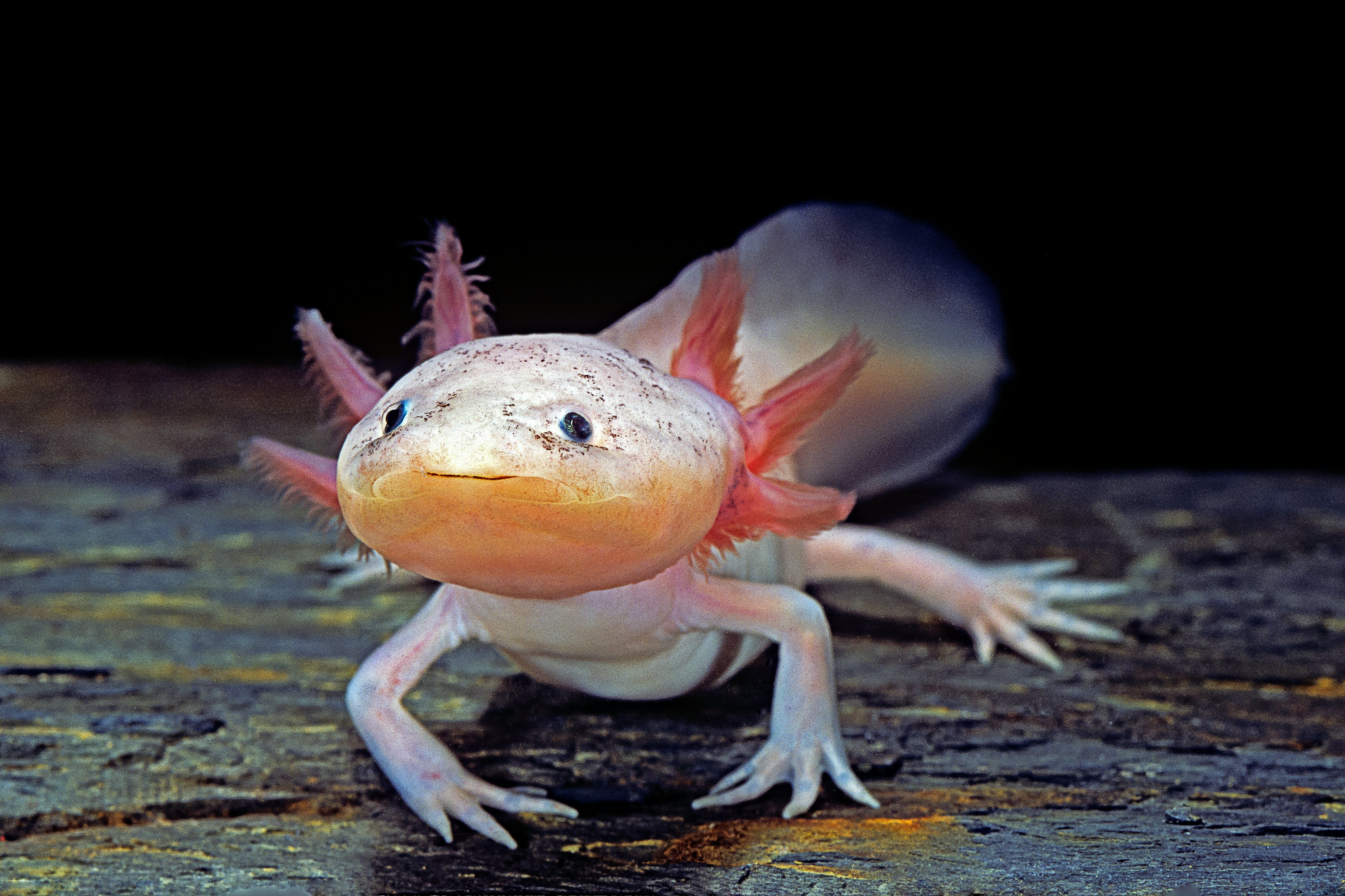
On the Southern edge of Mexico City, on a patch of land surrounded by water, a farmer and a scientist recently inspected rows of small cubes of mud that had sprouted seedlings. They were crouching on a chinampa, an island that appears to float in Lake Xochimilco, part of a complex ecosystem where the Aztec Empire once flourished.
The farmer, Dionisio Eslava, expects a good harvest of the mix of crops he planted this year. On this spring day in May of last year, he showed the agricultural scientist, Carlos Sumano, the sowing cubes he created with mud he scooped up from the bottom of canals, a Mesoamerican farming technique called chapín.
“They’re just about ready for transplanting,” said Eslava, carefully pulling a single cube from the ground and, after a closer look, returning it to its place with other chili pepper plants.
Eslava and Sumano are working together to preserve the region’s chinampas, remnants of the branch, and reed rafts that Mesoamerican farmers covered in nutrient-rich lake mud to grow fruits, vegetables, and flowers. They are part of a conservation partnership that is tapping Indigenous agricultural knowledge and scientific expertise to prevent the demise of Xochimilco, an ecosystem of more than 6,000 acres of protected wetlands that provides multiple environmental benefits, including food production, groundwater recharge, and carbon sequestration.
The traditional farmers, known as chinamperos, and scientists from the National Autonomous University of Mexico, also known by its Spanish acronym UNAM, are seeking to encourage sustainable and pesticide-free ancient farming to restore areas degraded by rampant development, pollution, and over-exploitation of groundwater. Though they haven’t always seen eye to eye over the years, the farmers and scientists agree that a healthier ecosystem will ensure not only continued food production but also the survival of the remarkable salamander called the axolotl, which is on the brink of extinction.
So far, the project involves some 30 farmers, including Eslava, who rely on ancient agricultural methods that include extracting a mix of rich soil and decaying vegetation from the marshy lakebed to grow crops. Among other things, they are digging narrow canals adjacent to chinampas to act as a refuge for the critically endangered axolotl and other threatened species. Rustic filters made from aquatic plants are placed in the canals to absorb contaminants and increase water transparency.
“We contribute what our ancestors taught us about the richness of the chinampas.”
Chinamperos maintain the canals, irrigate crops with cleaner water from restored waterways, and replace pesticides with organic fertilizers. Scientists evaluate species development and changes in water quality. They collect samples of water and soil to test in the laboratory for the presence of bacteria, heavy metals, and other pollutants. When the canals are free of contaminants and have reduced salinity, the water quality is better prepared to sustain the axolotl and other native species. Sumano and his colleagues also hold workshops on organic fertilizers and water and soil quality.
The farmers, meanwhile, provide the project with a wealth of knowledge that has been passed down from generation to generation, Sumano maintains. “We’re working with people who know how to get results on their chinampas,” he said. “It’s not like the institution is here to tell them what needs to be done.”
Eslava views the exchange of knowledge as a boon for one of the last vestiges of a centuries-old lake culture facing major threats to its survival. For years, he has worked on his own and with other chinamperos to clean up garbage from the shallow waterways he has navigated in wooden canoes since he was a youngster.
“We contribute what our ancestors taught us about the richness of the chinampas,” he said. “Scientists bring resources; they monitor the quality of the water and the nutrients in the soil.”
Still, some farmers remain wary of scientists because, over the decades, researchers from various institutions have studied Xochimilco in isolation, neglecting to tap the deep local understanding of chinamperos.
“They didn’t want to hear what we had to say, just like the authorities didn’t want to hear what we had to say because we are farmers,” Eslava said.
When he accepted Sumano’s invitation to join the project in 2020, Eslava was already relying on traditional farming methods without pesticides. But he hoped that scientific expertise and resources could help expand Xochimilco’s sustainable agriculture and improve habitat for the axolotl, or ajolote, and other native species like the freshwater crayfish acocil and the minnow-sized charal.
Eslava said he believes more farmers, as well as more people in the region, are coming to realize the importance of preserving Xochimilco (pronounced so-chee-meel-koh) and its biodiversity.
“If we all do our part,” he added, “we can leave something much better here for future generations.”

Despite the environmental pressures, the ecosystem remains a striking green space on the southern shore of Lake Xochimilco. Though it’s technically part of a metropolitan area of 21 million people, it retains a tranquil atmosphere. Rows of its most emblematic tree — the ahuejote, or willow — border chinampas in showy formation, its intertwined roots anchoring the plots. Xochimilco’s name in the Nahuatl language, “field of flowers,” is reflected in a landscape bursting with flowers like purple bougainvilleas and yellow floripondios, or angel trumpets, and rich with birds like white pelicans and egrets.
Xochimilco, which UNESCO recognized as a World Heritage site in 1987, was once part of a vast network of lakes and canals that stretched through the Valley of Mexico, where various Nahuatl-speaking Indigenous communities thrived long before Spanish colonizers arrived in the 16th century. The Spanish eventually drained the waterways as a new city replaced the conquered Aztec capital of Tenochtitlán, and urbanization over the centuries has further degraded the chinampas, despite multiple efforts to protect the area.
As the deterioration has worsened, concern has grown over the fate of the axolotl, which has profound cultural significance in Mexico as a symbol of the country’s pre-Hispanic history. A grinning image of the creature in the waters of Xochimilco graces Mexico’s new 50-peso bill.
Luis Zambrano, a biologist at UNAM who oversees the chinampas project with the farmers, arrived in Xochimilco in the early 2000s to research the axolotl or Ambystoma mexicanum. Researchers have long studied the small salamander’s extraordinary regenerative abilities in hopes of uncovering biological secrets that could one day help renew human tissue. The axolotl, which retains its juvenile characteristics throughout its life cycle, can grow new limbs and other missing organs.
When Zambrano began to study the animal, with its unusual flat head and crown-like gills, it was under siege in the canals where it had lived for centuries. Poor water quality and invasive carp and tilapia were introduced in the 1970s and ‘80s to promote fishing, devour axolotl eggs, and feed on the insects, small fish, and crustaceans crucial for the salamander’s survival.
Wild axolotl sightings are rare, but Zambrano says a survey of the population is pending. The last count conducted by the university in 2014 estimated the presence of axolotls at 36 per square kilometer or about .386 square miles. A survey conducted by the Autonomous Metropolitan University (UAM) in 1998 put that number at 6,000 per square kilometer.

Zambrano’s initial research has gradually expanded to include exploring the mutually beneficial union of salamander and chinampa. In 2017, his team received about 7 million pesos, or more than $370,000, for the project. The federal funding, made available for UNESCO-designated sites, kicked the project into high gear. In later years, Zambrano said, the funds decreased to 5 million pesos — including a portion provided by the local government.
The waterways of Mexico are the only natural habitat of the axolotl — “water monster” in Nahuatl — although the amphibian is abundant in captivity and a popular pet in various corners of the world. But Zambrano says that differences between wild and captive-bred creatures are considerable because captive axolotls experience losses in physiological and behavioral capabilities.
While Zambrano’s original idea was for surviving axolotls to wiggle on their own into the restored canals or refuges, researchers are also looking into the possibility of introducing captive-bred creatures to these spaces themselves. Before that can be done, however, Zambrano said they need more information about the salamanders’ genetics and reproductive capabilities, among other things. It’s known that farmers sometimes release axolotls into canals after raising them in aquariums, but the researchers say this is generally frowned upon due to environmental regulations.
“The quality of the water is reduced a lot when you put in pesticides and fertilizers because they kill everything, including the axolotl.”
If the axolotl goes extinct in the wild, it would be a tremendous loss to Mexico and the world, he said.
“It’s not only one of the most researched species in terms of genetics, but it’s an animal that’s closely connected to our Mexican culture.”
In Aztec mythology, the creature is the last incarnation of Xólotl, the god of fire, who transformed himself several times after refusing to die in sacrifice for the launch of the fifth cycle of creation. It’s a story passed down among generations, and Eslava knows it well. “When Xólotl was discovered, he was condemned to stay a salamander forever and was told that when his body of water was no longer useful, he and the human race would disappear,” he explained.
The ancient tale seems particularly relevant nowadays; Eslava maintains: “We are experiencing enormous pollution worldwide, and many species are becoming extinct. Here in Xochimilco, we are putting a lot of pressure on the axolotl area and the water that’s so important to us.”
On another spring day, Eslava paddled in the shallow waters of Xochimilco toward the chinampa where he grows his crops. Although he was away for years when he worked for the government and when he retired, he returned to his childhood home some years ago to find another Xochimilco. Houses had replaced vegetables in chinampas; plastic bags of trash piled high in the waterways and treated water flowed in canals once awash with natural spring water.
As Mexico City’s population has grown, intensive water pumping has depleted much of the underground sources that are used to feed the maze of canals. They now get treated wastewater from nearby plants, which has contributed to the decay of waterways and chinampas.
“Things were different when I was growing up,” Eslava said. “It was cleaner; there was no plastic at all. The scent of flowers was intense in the morning, and there were still many beautiful chinampas and canals.”
Many farmers have abandoned their chinampas, either because they’re not interested in farming or because they can’t make a living at it. Some rent out their plots, and instead of growing crops, tenants build houses or turn them into soccer fields or other unauthorized sites.
Meanwhile, crowds of visitors roam the waters of Xochimilco in colorful, flat-bottomed boats called trajineras, injecting money into the local economy but also straining the ecosystem.
Eslava was already involved in clean-up projects and restoration efforts with other Xochimilco residents when Carlos Sumano came calling in 2020. He relished the idea of the project because the university’s sponsorship would help provide funding and resources to assist chinamperos in reactivating dormant chinampa agriculture.

“All the fertilizer we need is down there in the water,” he said. “All the vegetation that disintegrates there is very rich material; it’s what our ancestors used. That’s why chinampa farming was so rich. There was an enormous diversity of crops, and everything was done using traditional methods like mud and native seeds.”
Those traditions had gradually succumbed to new agricultural practices that were ushered in starting in the 1940s with the promise of greater yields.
“The ‘green revolution’ was this vision of increasing agricultural productivity as fast as possible, as best as possible, and that’s when the use of pesticides and fertilizers started to grow,’” Zambrano said. “But the quality of the water is reduced a lot when you put in pesticides and fertilizers because they kill everything, including the axolotl.”
Narciso Alvarado is another chinampero who has stopped using pesticides and is participating in the project. He spends most of his days tending to such crops as cauliflower, onions, and radishes in his chinampa. The idea of being able to sell his crops at a fair price with validation from the university while helping to restore the ecosystem appealed to him.
“I’ve been farming for a long time, and I want to keep doing it here, in Xochimilco,” he said in a recent interview. “I don’t want chinampas to disappear.”
Neither does Eslava, who spends much of his time improving plots. He and Sumano recently brought six very young axolotls bred in aquariums to a narrow, restored canal. The minuscule creatures, which resembled tadpoles, wiggled out of a bucket and into the water. Sumano explained that the axolotls were placed there to be monitored for a few days, after which Eslava took them back out.
Zambrano believes the project has already started to reap benefits, like healthy species in some canals and growing interest in reactivating abandoned chinampas, though he notes that ambitious restoration projects such as this one take time and effort.
But “reactivating chinampas, restoring Xochimilco, implies improvement of biodiversity, improvement of the city’s water management, improvement of microhabitat changes,” he said. “It implies more resiliency in terms of climate change and conservation of an iconic species like the axolotl, as well as a significant increase in local food production.”
Lourdes Medrano is an independent, bilingual journalist based in southern Arizona who can often be found unraveling stories south of the U.S.-Mexico border.
This article was originally published on Undark by Lourdes Medrano. Read the original article here.







